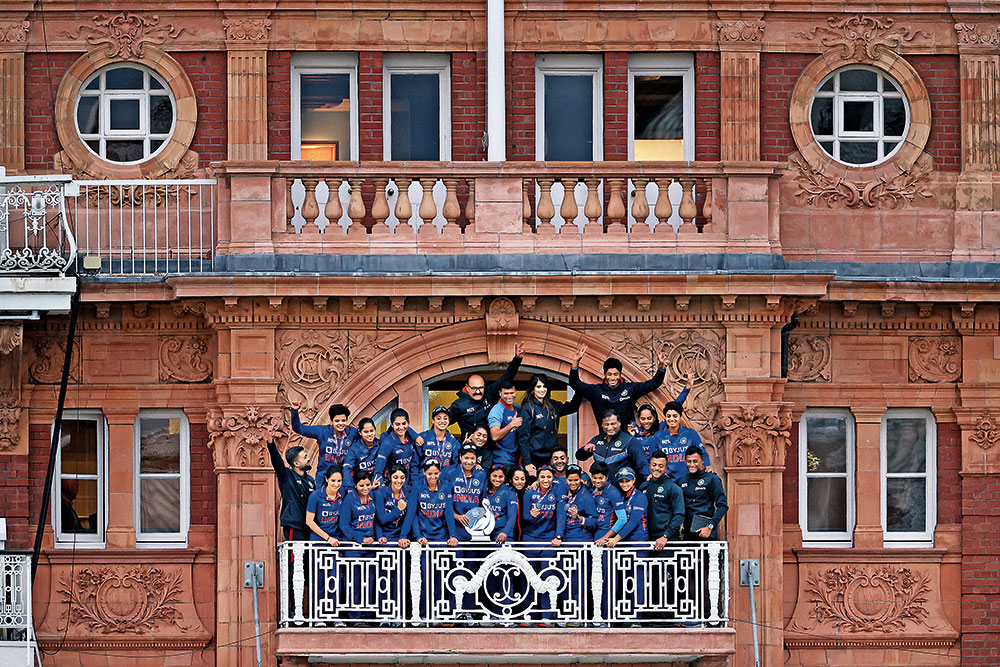Cricket, they say, is a religion in India that cuts across all barriers. Yet, within the sport, there has been a barrier that has remained almost invincible for long—of pay disparity between the Men and the Women in Blue. With its recent announcement to pay the women on par with their male counterparts, the Board of Control for Cricket in India (BCCI) is rewriting the narrative.
The Indian women’s cricket team has been going from strength to strength. After a spectacular show in the World Cup tournament in 2017, where it lost to England for nine runs but impressed cricket lovers, the team reached the Twenty20 International World Cup finals in 2020, following it up with a silver medal in the 2022 Commonwealth Games in Birmingham. The team is currently ranked fourth in the world in the ODI and the T20I formats of the game by the International Cricket Council.
Sadly, while these women raised the viewership of their game in the country exponentially, their glass ceiling in terms of remuneration remained low. The women in the highest grade received half of what the male cricketer in the lowest grade got—the top-graded male players earned 14 times more.
The BCCI announced in October that women cricketers would be paid as much as their male counterparts, joining New Zealand in bringing gender-based pay parity. Centrally contracted women cricketers will get Rs 15 lakh per Test, Rs 6 lakh per ODI and Rs 3 lakh per T20, the same that the men get. Earlier, women players received Rs 1 lakh each for ODIs and T20s and Rs 4 lakh for a Test match.
One of the top priorities of the board was to strengthen women’s cricket in India, says BCCI secretary Jay Shah. “The first major step in this direction was taken in September 2021, when we announced a hike in match fees for our domestic cricketers, right from age group to the senior level. In fact, for women’s cricketers, the hike has been nearly doubled. This will ensure that they can focus entirely on playing cricket as professionals and not drop out after a certain age,” Shah says.
Impactful Delivery
Cricketer Jhulan Goswami, who became the highest wicket taker in the Women’s World Cup in March this year, looks at the decision as one that can have multi-pronged impact. For starters, parents will not be worried about what their girls will earn, she points out, recalling her own parents’ anxiety when she started off. “It will also create a huge impact in our society because a lot of other sports do not get the kind of facilities that BCCI is providing. I am hopeful that this will nudge other sporting bodies into providing women sportspersons with proper facilities and give them respect equal to that accorded to their male counterparts,” she adds.
According to Goswami, things began to change after the BCCI took Women’s Cricket Association of India under its wings in 2006–07. “The facilities that the BCCI provides are entirely different from what they used to be [when I started out],” Goswami says. The board holds regular fitness camps, zonal camps and preparatory camps to help prepare girls ahead of a major tournament.
Last year, the women’s team played two Test matches, one in England with red ball after seven years and the maiden pink-ball Test in Australia under lights. Shah says that there could be more Test matches in future. “We have also started ‘A’ tours for women, which will help us not only identify more talented girls but also in the transition from the domestic to the international level. For the first time, we have introduced a tournament at the Under 15 level for girls,” he says.
Shah hopes that more women cricketers can come forward to take up coaching roles, just like in men’s cricket.
Next year will be an important one for women’s cricket in the country, he points out, hinting at some key announcements coming soon.











